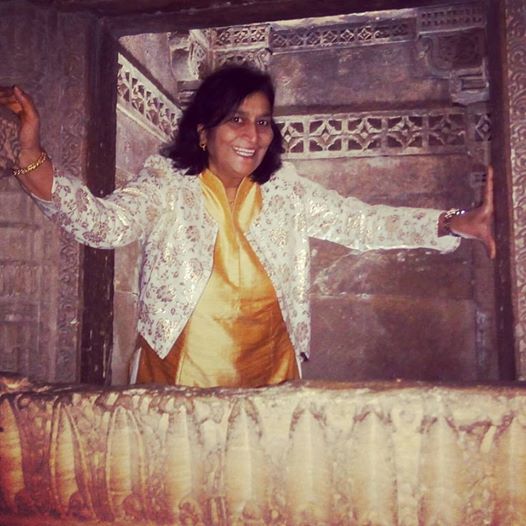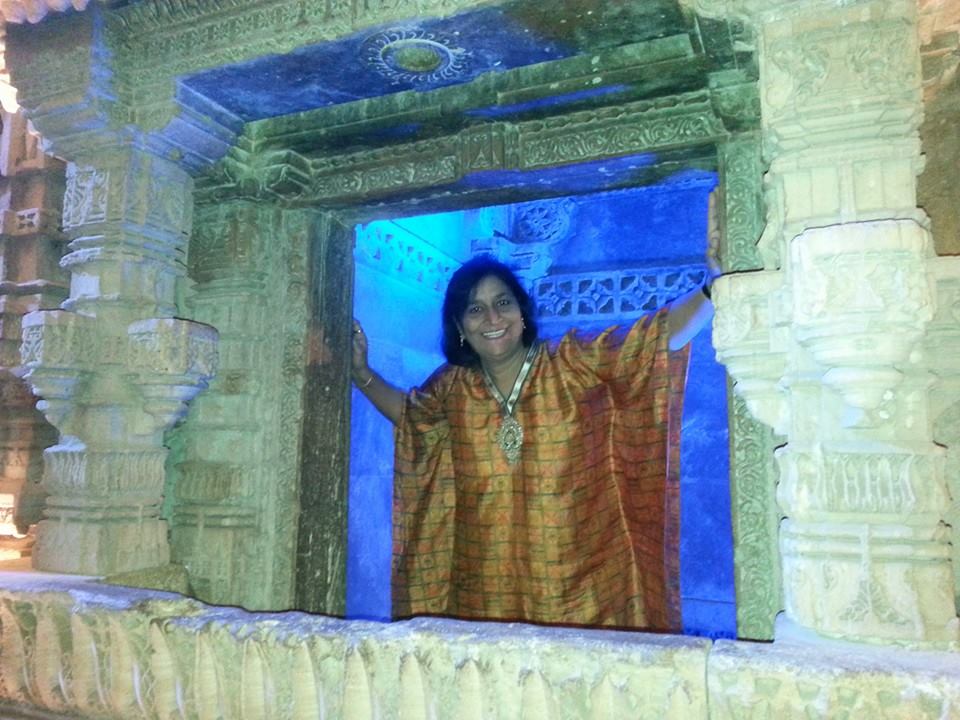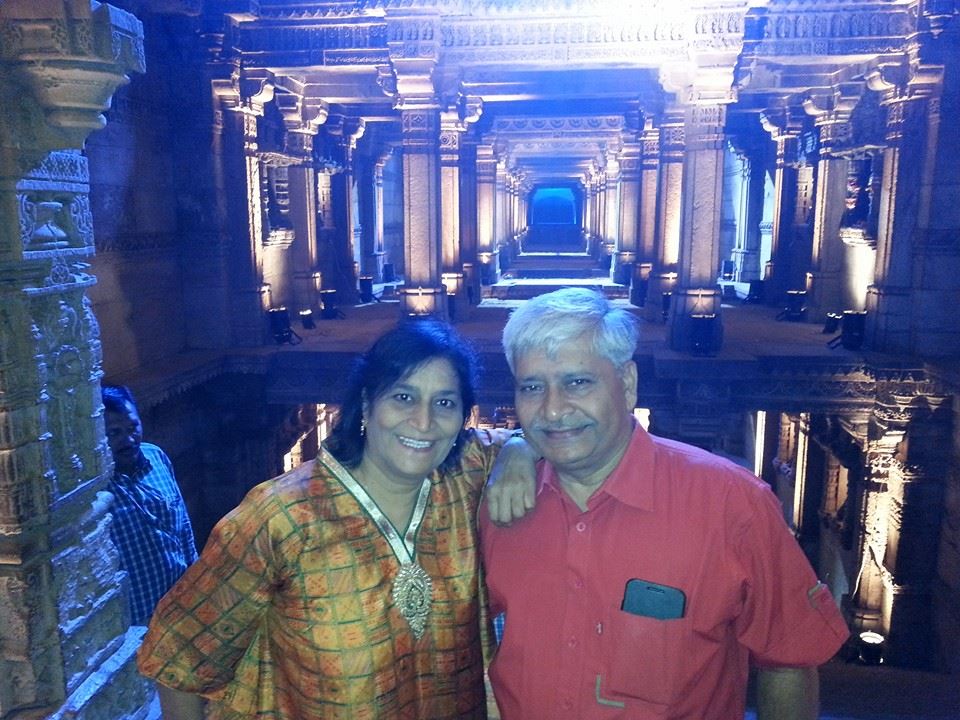Heritage week and it had to be a last moment planned visit to Music Festival at Adalaj vav on 19th November 2016.
Saw many with selfies and poses and sure a Feel Good Factor as I pose…The place and the olden days carving is so tempting..Been here earlier too but this was too Classical music and especially, the saxophone.
But, here will be talking on The Adalaj Vav. Set in the quiet village of Adalaj, this vav has served as a resting place for hundreds of years for many pilgrims and caravans along their trade routes. Built in 1499 by Queen Rudabai, wife of the Vaghela chief, Veersinh, this five-storey stepwell was not just a cultural and utilitarian space, but also a spiritual refuge. It is believed that villagers would come everyday in the morning to fill water, offer prayers to the deities carved into the walls and interact with each other in the cool shade of the vav. There is an opening in the ceilings above the landing which allows the light and air to enter the octagonal well. However, direct sunlight does not touch the flight of steps or landings except for a brief period at noon. Hence some researchers say that the atmosphere inside the well is six degrees cooler than the outside. Another remarkable feature of this stepwell is that out of the many stepwells in Gujarat, it is the only one with three entrance stairs. All three stairs meet at the first storey, underground in a huge square platform, which has an octagonal opening on top. The vav is a spectacular example of Indo-Islamic architecture and design. The harmonious play of intricate Islamic floral patterns seamlessly fusing into Hindu and Jain symbolism embody the culture and ethos of those times. All the walls carved by ornamentation, mythological scenes along with everyday scenes of women churning buttermilk, dancers accompanied by musicians, women adorning themselves and a king sitting on a stool. Fascinating to many visitors is the Ami Khumbor (a pot that contains the water of life) and the Kalp Vriksha (a tree of life) carved out of a single slab of stone. There is a belief that the small frieze of navagraha (nine-planets) towards the edge of the well protects the monument from evil spirits.
I wonder why this do not appear in the List of UNESCO’s World Heritage Site.
Jazz – The Water Festival Adalaj ni vav #Heritage saw Amazing performance by Louis Banks, Sanjay Divecha, Gino Banks, Sheldon D’Silva, varun Venkat and Fazal Qureshi. Organized by Crraft Of Art festival, The show was simply a superb communication of artists which I could understand their language of Expression through #music – Heritage world week simply enthralling…This was on 24th November 2015.
Water Festival at Rani ki vav, Patan. An amazing World Heritage place. Loved the ambience, the open surroundings and the huge feel of the well lit vav. I went here on last year on 19th November 2015.
Rani kivav is an intricately constructed stepwell situated in the town of Patan in Gujarat, India. It was included in the list of UNESCO’s World Heritage Site on 22 June 2014.
Raniki Vav, “the Queen’s stepwell”, at Patan, the medieval capital of Gujarat, was built in the last decades of the eleventh century by Queen Udayamati as a memorial to her husband Bhimadeva-1 of the Caulukya dynasty. Measuring more than sixty-five meters in length, it is among the largest in Gujarat, and in terms o
f its sculptures which number about five hundred, surpasses all other examples.
The stepwell, or a well with an underground flight of steps leading down to the level of the water, developed early in the arid region of Western India and Rajasthan. The place is completely transformed that earlier times – the humble village well was transformed into a strikingly original architectural form. Wonderfully carved brackets with forms of Lord Shiva, Vishnu and others. There is also a small Gate below the last step of the step well which has a 30 kilometre tunnel built (Now it has been blocked by stones and mud) which leads to the town of Sidhpur near Patan. It was used as an escape gateway for king who built the step well in the times of defeat.











